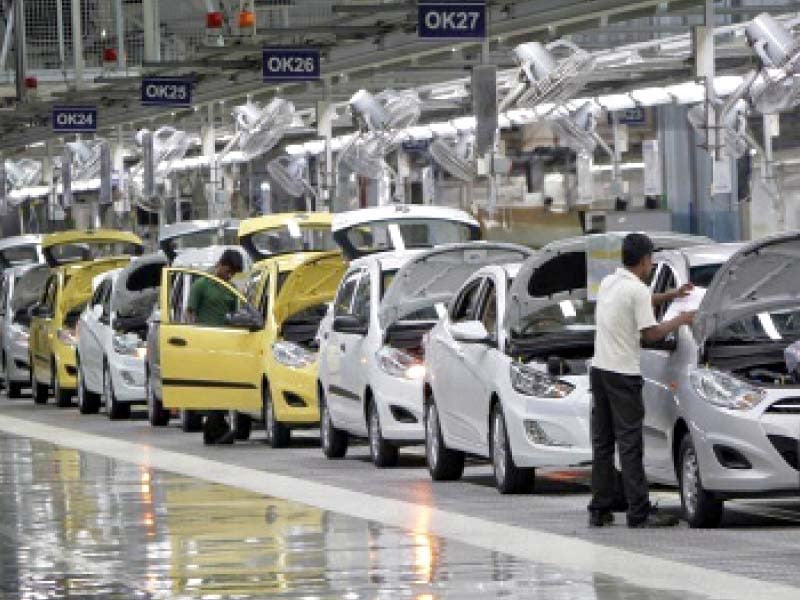
In the past three and a half years, the local currency has depreciated by around 31% against the US dollar to stand at Rs175.86 in the inter-bank market on Friday (February 18).
Experts believe that this devaluation has tremendously increased inflation besides raising the country’s debt to an unsustainable level.
The Express Tribune takes a look at the impact of the deprecation on multiple sectors.
Federation of Pakistan Chambers of Commerce and Industry (FPCCI) official Ahmad Jawad lamented that despite a surplus in the current account and robust home remittances last year, “Pakistani rupee failed to witness any sizable correction”.
Does the government not realise what the country has suffered during the past 3.5 years in the wake of 31% currency devaluation, he questioned.
“The foreign exchange reserves, held by the State Bank of Pakistan (SBP), stand at around $17 billion,” he mentioned adding that $2 billion were on way from international lenders which would be reflected in the data within two to three months.
Still, the exchange rate continues to hover at 175 against a dollar, he lamented.
“This shows that we are being forced to depreciate the local currency by the international donors and it is an agenda against Pakistan to weaken the economy,” Jawad held the view.
Prime Minister Imran Khan should understand that rupee appreciation was direly needed for economic recovery of the country.
If the local currency failed to gain ground, the country would remain in the grip of skyrocketing inflation and surging commodity prices of products ranging from automobiles to food items.
Talking about the automobile sector, he pointed out that the local industry took the advantage of rupee depreciation and revised the prices of cars upward by around 70% despite the fact that the assembly plants were located in Pakistan and only a few parts had to be imported.
Moreover, the prices of essential medicines have risen as well, he noted.
Citing a study, which analysed the price trends of 120 randomly selected medicines, Jawad observed that a major jump was witnessed in 2019 as the average price of the sample soared to Rs585 against Rs410 in 2018.
He recalled that the Drug Regulatory Authority of Pakistan (DRAP) allowed 15% price hike on medicines in 2018 due to abrupt devaluation of the rupee.
The rates of active pharmaceutical ingredients of common medicines, being imported from China, soared due to the rupee depreciation, Jawad pointed out.
In August 2018, the local currency was standing at Rs123 a dollar, which had devalued to Rs178 in January 2022, he recalled adding that the nation witnessed one of the steepest depreciation during the 3.5 year period in history.
“The only other sharp devaluation of local currency occurred when Dhaka (Bangladesh) was separated from Pakistan,” he stated. “At that time, the local currency depreciated by 58% from Rs4.6 a dollar to Rs11.1.”
He reiterated that the recent slump in the local currency was “dictated by the International Monetary Fund (IMF) and it has nothing to do with macroeconomic fundamentals”.
Detailing the performance of the regional currencies, he underlined that the Indian rupee was standing at Rs70.09 against the US dollar in 2018 and it now stood at Rs75.39.
The Bangladeshi taka fluctuated in the range of 84 to 85.9 a dollar (on an average) in the past two years and it was currently standing at 85.76 against the greenback.
Insight Securities analyst Ali Asif was of the view that the manufacturing sector bore severe brunt of rupee depreciation.
The fall in the value of local currency lifted the cost of production which eventually led to an additional price burden on the end consumers, he added.
“We have noticed persistent increase in car prices on the back of rupee depreciation, as most of the raw material, particularly cold-rolled coil (CRC) for flat steel, is imported.”
On the flip side, the slump in rupee value greatly aided the textile exporters in posting better profit margins, he underlined.
“Although the sector imports some of the raw material, the devaluation of rupee lent it all-out support,” he added.
Echoing his views, Arif Habib Limited (AHL) analyst Arsalan Hanif said that rupee’s devaluation against the greenback mainly facilitated the textile sector.
“It gives the textile exporters a competitive advantage over other countries, in terms of pricing, labour charges and profit margins,” he said, adding that the sector was witnessing a double-digit growth in exports.
On the other hand, the automobile sector was the worst affected from the slump in the rupee value, as “the industry imports most of its parts from abroad”, he underlined.
Therefore, car prices in Pakistan increased by more than 50% in the past three years, he added.
“The auto sector can easily pass on the impact of costly raw material to end-consumers due to strong pricing power of auto companies,” he said. “This has already been witnessed in the past.”
Talking about the textile industry, Topline Securities analyst Saad Ziker noted that the diversion of foreign orders to Pakistan from regional countries, amid the Covid-19 pandemic, also played a key role in lifting the textile exports besides devaluation of local currency.
The textile exports touched $9.4 billion in the first half of 2021-22, he said adding that the rupee depreciation coupled with higher cotton prices helped the sector reach this level.
“Textile sector is the biggest beneficiary of rupee devaluation,” he remarked.
Referring to the pharmaceutical industry, he mentioned that the companies urged the government to increase the prices of medicines, as the majority of active pharmaceutical ingredients were being imported by the firms.
Citing examples, he said that recently the cost of raw material used in Paracetamol (medicine) increased which led DRAP to approve around 40% hike in its price, from Rs1.9 to Rs2.7 a tablet.
Insight Securities analyst Saad Hanif underlined that the slump in the value of rupee had significantly increased the production cost of the industries, as “they mainly import coal for their operations and it constitutes around 40-45% of their cost of goods sold”.
A senior analyst of the cement industry, Saqib Hussain, was of the view that the rupee devaluation had increased the cost of manufacturing by Rs100 a bag (cement) in the past three years.
Topline Securities analyst Mehroz Khan said that following the outbreak of Covid-19, the global steel industry faced multiple challenges as the commodity super cycle had a grave impact on the sector.
This resulted in higher working capital requirements and also restricted volumetric growth due to inflated prices.
“Before Covid-19 struck Pakistan, the steel industry was already reeling from the impact devaluation of the local currency because it relies on imported raw material,” he said.
Citing that since December 2017 to date, the input cost of the long steel industry surged 142%.
Talking about flat steel, he stated that there was a rise in the input cost (landed raw material) by 154% out of which 102% came on the back of weakening of the local currency.
“Same goes for the cement sector whose raw material cost skyrocketed 229%, with currency devaluation holding a share of 132%,” he said.
Published in The Express Tribune, February 20th, 2022.
Like Business on Facebook, follow @TribuneBiz on Twitter to stay informed and join in the conversation.







1719053250-0/BeFunky-collage-(5)1719053250-0-270x192.webp)










COMMENTS (1)
Comments are moderated and generally will be posted if they are on-topic and not abusive.
For more information, please see our Comments FAQ